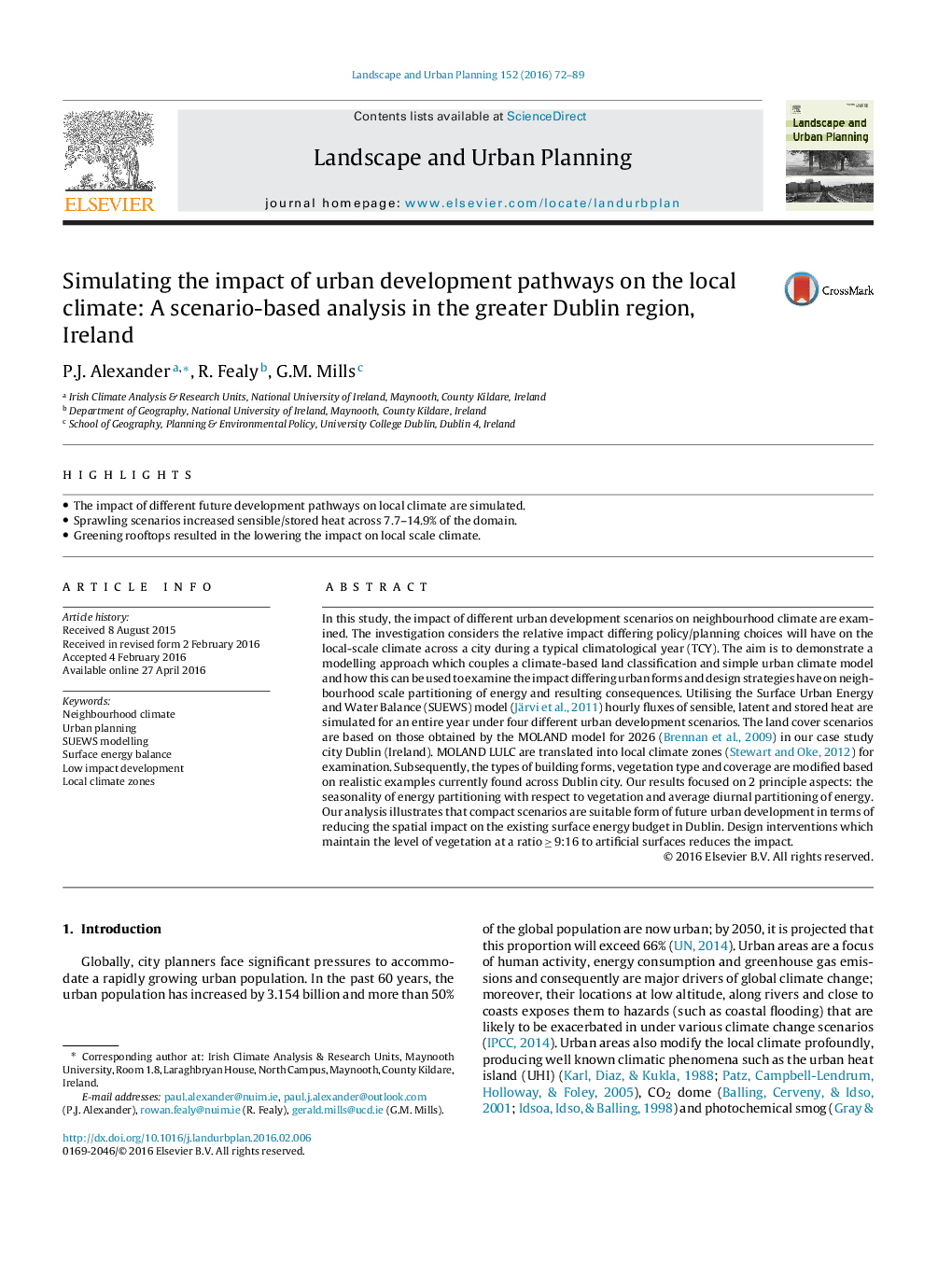| کد مقاله | کد نشریه | سال انتشار | مقاله انگلیسی | نسخه تمام متن |
|---|---|---|---|---|
| 7460597 | 1484606 | 2016 | 18 صفحه PDF | دانلود رایگان |
عنوان انگلیسی مقاله ISI
Simulating the impact of urban development pathways on the local climate: A scenario-based analysis in the greater Dublin region, Ireland
ترجمه فارسی عنوان
شبیه سازی تاثیر مسیرهای توسعه شهری بر آب و هوای محلی: تجزیه و تحلیل مبتنی بر سناریوی در منطقه دوبلین بزرگ ایرلند
دانلود مقاله + سفارش ترجمه
دانلود مقاله ISI انگلیسی
رایگان برای ایرانیان
کلمات کلیدی
موضوعات مرتبط
علوم زیستی و بیوفناوری
علوم کشاورزی و بیولوژیک
بوم شناسی، تکامل، رفتار و سامانه شناسی
چکیده انگلیسی
In this study, the impact of different urban development scenarios on neighbourhood climate are examined. The investigation considers the relative impact differing policy/planning choices will have on the local-scale climate across a city during a typical climatological year (TCY). The aim is to demonstrate a modelling approach which couples a climate-based land classification and simple urban climate model and how this can be used to examine the impact differing urban forms and design strategies have on neighbourhood scale partitioning of energy and resulting consequences. Utilising the Surface Urban Energy and Water Balance (SUEWS) model (Järvi et al., 2011) hourly fluxes of sensible, latent and stored heat are simulated for an entire year under four different urban development scenarios. The land cover scenarios are based on those obtained by the MOLAND model for 2026 (Brennan et al., 2009) in our case study city Dublin (Ireland). MOLAND LULC are translated into local climate zones (Stewart and Oke, 2012) for examination. Subsequently, the types of building forms, vegetation type and coverage are modified based on realistic examples currently found across Dublin city. Our results focused on 2 principle aspects: the seasonality of energy partitioning with respect to vegetation and average diurnal partitioning of energy. Our analysis illustrates that compact scenarios are suitable form of future urban development in terms of reducing the spatial impact on the existing surface energy budget in Dublin. Design interventions which maintain the level of vegetation at a ratio â¥Â 9:16 to artificial surfaces reduces the impact.
ناشر
Database: Elsevier - ScienceDirect (ساینس دایرکت)
Journal: Landscape and Urban Planning - Volume 152, August 2016, Pages 72-89
Journal: Landscape and Urban Planning - Volume 152, August 2016, Pages 72-89
نویسندگان
P.J. Alexander, R. Fealy, G.M. Mills,
